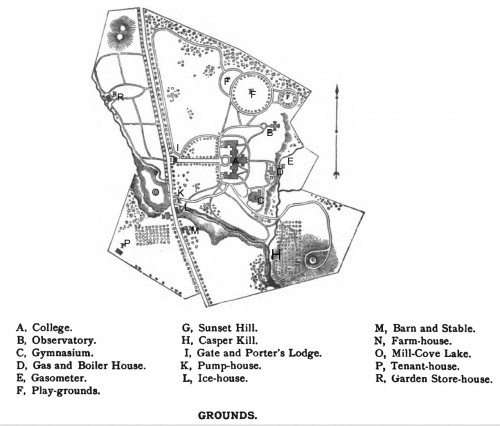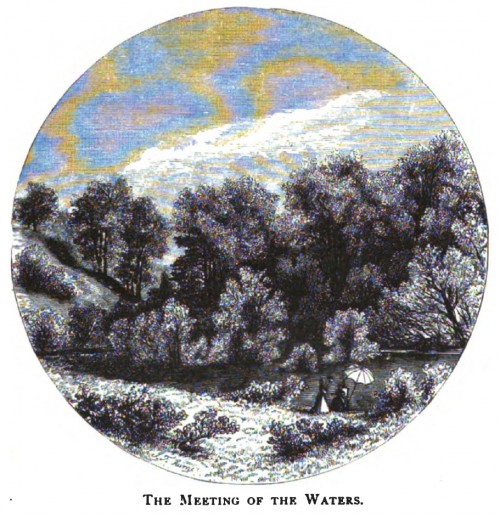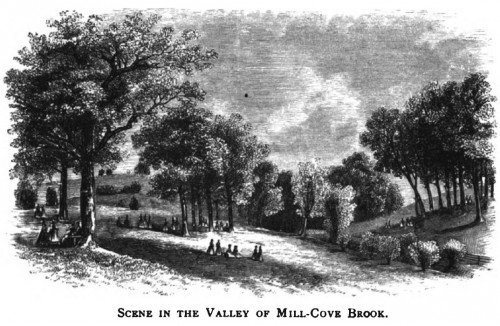
In 1876, a Historical Sketch of Vassar College was prepared “in compliance with an invitation from the Commission of the Bureau of Education, representing the Department of the Interior in matters relating to the National Centennial.” This early document highlights the centrality of the Casperkill Creek to the value (and landscape design) of the land selected as the site for the College. It also shows how the Casperkill was integrated into the College’s sewer facilities.
About the College’s grounds, the Sketch explained that “the land purchased by the founder for his College had previously been cultivated as a farm, and possessed few attractions except those which nature had given it in its pleasantly diversified surface, rising at one point (G in the map above) to a commanding elevation, its ravines, enlivened by unfailing springfed brooks, its pretty lake, and the fine growth of forest-trees bordering the west side of the lake and scattered thickly along the valley of its outlet” (31-32).
Matthew Vassar, “an experienced and successful landscapist, as his beautiful villa of Springside . . . still remains to show,” engaged in a “system of ornamental plantation” that included the planting of throusands of trees while the main building was being constructed. The landscape improvements included the lake, which was “more than doubled in length by the excavation of large deposits of muck at its upper extremity.” The “muck” taken out amounted to eigth thousand cartloads which which were combined with the sewage from the College to produce the fertilizer that gave the College’s lawns “a deeper and richer verdure.” It is interesting to note from the document the importance that the point where the Casperkill and the Fonteynkill creeks meet had in the design of the campus landscape. (See the illustration below.)

Also important in our context was the role the Casperkill had in the then state of the art “system of sewerage and drainage” the College had adopted within the three years preceding the Sketch, which is described as “perfect”:
The sewage from the College is carried through pipes to the ravine, four hundred feet east of the building, and there discharged into a large covered brick tank, from which, after the settling of the more solid portions, the comparatively clean liquid is conveyed through sewer-pipes underground nearly two thousand feet before it is discharged into the combined Casper Kill and Mill-Cove Brook. The portion retained in the tank, rich in phosphates and other fertilizing elements, being then drawn off into the muck-heaps prepared to receive it, it at once deodorized and converted into a valuable manure.

Source:
Historical Sketch of Vassar College, Founded in Poughkeepsie, N.Y., January 18, 1861. New York: S. W. Green, 1876.
The document can be downloaded as a pdf file from Google Books.